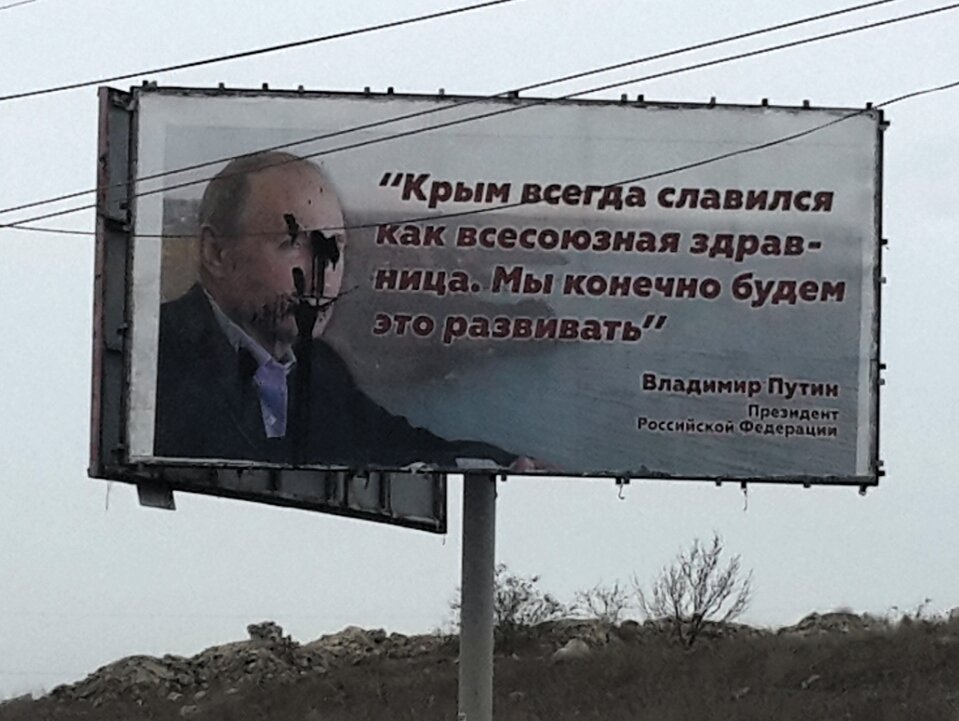According to the same CEC, his only opponent admitted to the election process - Sviatlana Tsikhanouskaya - scored only 9.9%. The protests began on the night after the election and have spread to most Belarusian cities.

Photo: Tatiana Svirepa
People of all ages and professions take to the streets every day, chanting, “Leave!” The country’s major companies are on strike, demanding fair elections and the release of political prisoners.
The first week of protest was marked by the largest March for Freedom in the country’s history - a procession under white-red-white flags, which gathered about 200,000 participants.
The authorities responded with a technical and physical crackdown: Internet disconnection, violent dispersal of rallies, and mass detentions of protesters. On the other side, Lukashenka supporters gathered to applaud the incumbent president, and Lukashenka himself appeared before striking factory workers and appealed to Russia for military assistance.
The events in Belarus can openly be called a revolution, where technology plays a key role. Experts and journalists say that what is happening constitutes a major Telegram revolution in a country that has one of the strictest Internet censorships in the world.

The onslaught of digital technology and social media
In Russia, the protest movement against Lukashenka’s re-election was met with sarcastic reviews and comments. Russian state channels vigorously declared that so-called “Maidan technologies” were actively being used to fuel the protests and faulted the West for “meddling in Belarusian elections”.
“Belarusian activists are preparing great scenarios for Western agencies… like, what slogans to shout and what roads to block. Technology hasn’t changed since the Maidan – strong, young provocateurs are the first in line; they approach the riot police, followed by the crowd,” said Russian propaganda host Olga Skabeeva while commenting footage of protests in Belarus on Russia-1 TV channel.
The idea that revolutions can be technologically provoked has long been an integral part of anti-protest discourse.
In his press briefing after the first night of protests, Lukashenka often upheld this idea, referring to “puppet masters” from the Czech Republic, Poland, Ukraine and other countries controlling the rallies.
However, Belarusian authorities began condemning the opposition movement long before the clashes between the protesters and the police started. Lukashenka and Belarus state-operated media often referred to the Gene Sharp Method, the Ukrainian Maidan and Western investors, accusing them of intruding into Belarus affairs.
In an interview with Deutsche Welle, Ukrainian civil activist Pavlo Sydorenko disagreed and commented firmly on Lukashenka’s words about outside interference:
“No, not at all! It’s a public outburst of pent-up emotions that’s impossible to organize artificially. It’s either there or not.”
In other words, if external events do not correspond to an individual’s innermost convictions, he will neither rebel nor come out in protest.
Belief perseverance highlights the tendency for people to hold their beliefs as true, even when there is ample evidence to discredit the belief. When faced with evidence that contradicts their beliefs, people may choose to discredit, dismiss, misinterpret, or place little significance on the contradictory information.
Political views hold a special place in a person’s judgment, and counterarguments are not always capable of dislodging confidence in them. In a recent study conducted among students at the University of Southern California, who were all self-identified as political liberals of deep conviction, a team of scientists demonstrated that when the subjects encountered arguments that contradicted their set political views, this gave rise to negative emotions, internal conflict and rejection of received information.

Technology as a barometer of public sentiment
It is unlikely that the above arguments will convince pro-Lukashenka politicians and media that the Belarusian protest movement is real and natural. However, a number of facts speak for themselves.
The fact that discontent was brewing was clear long before the elections. Google queries for the last month show that Belarusians actively consulted alternative websites and resources. Golos, a grassroots IT platform created by the Chestnye Liudi (Honest People) movement advocating free elections, includes an alternative vote counting system. The Belarusian team of programmers was able to develop highly effective security and recognition systems, and analysis of platform documents.
According to statistics
, the vast majority of Belarusians are avid Internet users - 7.4 million out of 9.4 million residents. So, it is highly probable that Belarusians were getting ready for falsifications and were actively studying Lukashenka’s major opponent on the Internet.
As of today, the Golos platform has nearly 1.3 million users (out of 6.8 million voters in Belarus). It is easy to operate: a person registers, and indicates his polling station and choice in the chatbot.
“On election day, we ask Mr.X, who registered on our platform, to take two photos - the front and back sides of his ballot, and send them to the same chatbot,” informs an anonymous coordinator of the Golos platform.
On election day, 0.5 million people shared their voting results, which allowed Golos to prove that massive electoral fraud was widespread across the country.
No less indicative is the fundraising project for victims of arrests and repressions in Belarus.
For five days running, over 7,000 people were detained in Belarus - many of the protesters were beaten by OMON security forces, some were tortured, others were fined or placed under administrative detention.
Using Facebook’s fundraising platform, activist Aleksei Leonchik raised more than $2.6 million US in less than a week after the start of the protests. Leonchik launched the campaign three months before the protests, explaining that “it was becoming clear that the presidential campaign would involve some dirty games.” He says that most of the money was transferred by Belarusians living abroad and outraged by the violent actions of the authorities. The collected money will be used to pay fines for legal services and participation in the riots. In addition, the fundraising team wants plans to make lump sum payments to the victims, depending on the severity of the injuries.
However, the most striking example of modern technology in the Belarusian revolution is the widespread use of the immensely popular Telegram Messenger.
On election day, the Internet was blocked across the country. Telegram remained the only working messenger resource.
In the evening of August 10, Telegram developer Pavel Durov, announced the launch of a number of counter-censorship tools that allow Telegram to bypass blocking information that is undesirable from the point of view of Belarusian providers. TG channels became the main media of the protest movement, taking on the role of resistance coordinators.
Today, the key Belarusian Telegram project - Nexta channel (Belarusian “нехта” -someone) - has over two million users, continues to grow daily and is the absolute world leader
in terms of readership growth (+ 1.7m per week) and cumulative reach (444.5m + 566.1%).
The consolidation and unification of Belarusian society is truly exceptional, and proves once again that “methodological revolutions” are not systematic and that theories referring to “the subversive influence of the West” are inconsistent.
People will never accept what is at odds with their beliefs; that is the way human beings are built. Conversely, they will willingly trust what corresponds to their innermost views.

Game theory and the Belarus phenomenon
There is no doubt that we are witnessing unprecedented unanimity in the Belarusian people’s aspirations for change.
But, how could this happen in a country that has lived for 26 years under an uncompromising one-man dictatorship and the inability of society to influence political decisions?
Over these years, Lukashenka methodically got rid of the opposition, thereby instilling fear and suspicion, and destroying any thoughts of rebellion or protest.
Even today, the Belarusian dictator has no obvious or strong political opponents. All of them are either imprisoned or have left the country.
Sviatlana Tsikhanouskaya nominated herself as an opposition candidate after the CEC refused to register her husband. In May 2020, Siarhei Tsikhanouski announced that he was planning to run for the 2020 presidential elections, but he was arrested two days afterwards.
Sviatlana herself has repeatedly stated that she is a housewife and does not want to become president. Her mission is to hold democratic elections and free political prisoners.
Belarusians lack skills to protest. They do not have charismatic revolutionary leaders. The pro-government media are spreading ideas that this wave of disobedience is the seventh unsuccessful attempt at a “colour revolution”. The protesters are accused of “plunging the country into a protracted political crisis and creating yet another political hotspot”.
In parallel, social media are filled with visual stories of the OMON riot police viciously attacking the protesters and chilling testimonies of released prisoners.
It seems that there is no reason to believe in victory or a positive outcome. People are taking more and more personal risks, as they put both their life and health at stake. However, for several weeks, people have been taking to the streets and defending the right to determine their political future.
What is happening in Belarus today is called model breaking in game theory… from the “every man for himself” model to the solidarity model. Protesters are putting their physical and material well-being on the line by participating in factory strikes, lying under paddy wagons, and risking their lives. They are openly confronting the police, endangering their personal freedom.
Thus, individual victories and defeats become insignificant. Loyalty to a common cause becomes more important than personal achievement, and the implementation of collective ideas means much more to everyone than what will happen in the end.
Unfortunately, there are several negative options as to the final outcome in Belarus. Senator Marc Rubio (R-Fla.), a member of the Senate Foreign Relations Committee, warns that Russian military intervention if Lukashenka is removed or cannot restore order is very real, while American media ring alarm bells.
“Despite being commonly referred to as “Europe’s Last Dictator,” the E.U. and the US see Lukashenka’s reign as preventing Belarus from spiraling into chaos that would give Russian President Vladimir Putin an opening to send Russian forces to impose authority...” maintains the American journal The Hill.
It is indeed phenomenal that in such difficult conditions the protest movement is growing. Without leaders and well-defined international support, Belarusians are demonstrating unique solidarity and mutual assistance.

The role of technology in Belarus’ struggle for democracy
The Internet and social networks cannot force people whose ideas are not challenged to come out in protest, but they can build up determination, and give impetus to the situation.
This is the main secret of Nexta Telegram channel; it publishes photo and video content that help break the pattern of avoidance and fear.
Not only do social networks enhance the general mood and atmosphere , but they also assure users that the protesters will definitely help, support and protect each other, that it is no longer “every man for himself”, but “one for all and all for one”.
We see an OMON officer throwing his uniform into the trash can, an elderly man getting into a skirmish with the riot police, because they destroyed his car, Belarusian businessmen supporting the protesters and collecting money for striking workers, people protecting a protester from the brutal commandos, and doctors urging wounded protesters to seek treatment.
As people surf different social networks and Telegram channels, each individual example of courage becomes an additional reason to join the protest. There is no time to think about oneself or listen to other opinions.
These displays of mutual assistance, courage and patriotism have helped every Belarusian to see that they are not alone, that there are thousands of opponents to the regime... more than they could ever have imagined.





